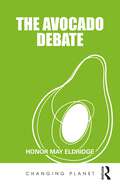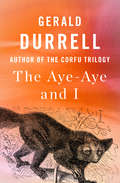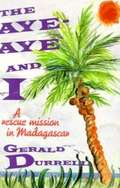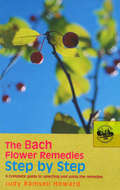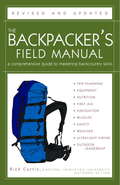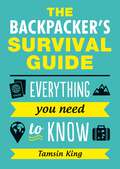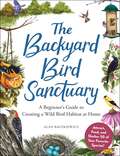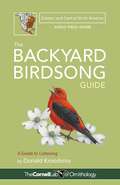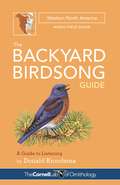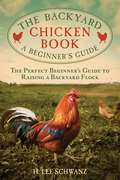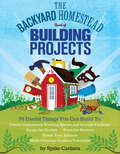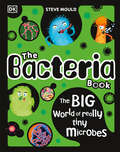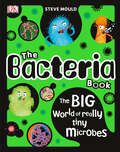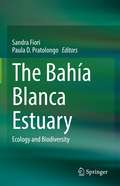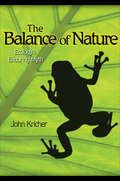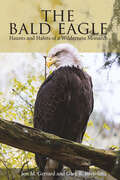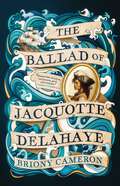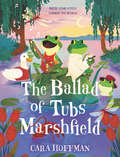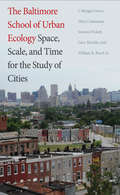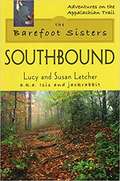- Table View
- List View
The Avocado Debate (Changing Planet)
by Honor May EldridgeWhether smashed on toast or hailed as a superfood, the avocado has taken the world by storm, but what are the environmental and social impacts of this trendy fruit? This book does not seek to demonise the avocado and its many enthusiasts. Instead, it will illuminate consumers on the often unseen impacts of foods. A staple of cafes, restaurants, homes, and social media channels, demand for the avocado has grown exponentially over the past thirty years. From an everyday crop in South and Central America to a global phenomenon, this drastic change in demand has many consequences for people and the planet. As demand grows, so does the need for more land, with land clearances threatening habitats and biodiversity. As production grows, so does global distribution and the impacts that air and sea travel have on the environment. The shift from a local to a global product disturbs the local food system, raising serious questions around food sovereignty and food justice and the importance of establishing an agricultural system that is both environmentally and socially just. While focusing here on the avocado, this book allows readers to gain a better understanding of the food system as a whole. In doing so, it empowers us all to think carefully and critically about the environmental and ethical implications of our food choices more broadly. We shouldn’t feel guilty about eating avocados, we should simply understand the impact of doing so. This book is essential reading for all who are interested in learning more about the food system, sustainable diets, and the relationship between farming and the environment.
The Aye-Aye and I: A Rescue Journey To Save One Of The World's Most Intriguing Creatures From Extinction
by Gerald Durrell"First-rate entertainment": The author of the Corfu Trilogy recounts his expedition to Madagascar and search for the elusive, endangered aye-aye (Publishers Weekly). In 1990, Gerald Durrell; his wife, Lee; and a television crew embarked on a rescue mission to one of the most interesting places in the world: the island of Madagascar. It was there that they hoped to record and capture the endangered aye-aye, the world's largest nocturnal primate. Recognizable by its big eyes and long fingers, the strange, rare aye-aye was an animal of incredible fascination for Durrell, one he felt compelled to conserve as its habitat was taken away by deforestation. In this passionate memoir, Durrell's funny, vibrant voice shines as he describes the magical landscape of Madagascar, the exotic animals that inhabit it, and the challenges of his expedition to preserve an important part of our ever-changing world. This ebook features an illustrated biography of Gerald Durrell including rare photos from the author's estate.
The Aye-Aye and I: A Rescue Mission in Madagascar
by Gerald DurrellDurrell (The Ark's Anniversary) in his efforts to rescue endangered species. Here he is in Madagascar--with his wife, Lee, and a BBC crew--to film and to capture for breeding the rare aye-aye, a nocturnal lemur of Africa's east coast rain forests.
The Bach Flower Remedies Step by Step: A Complete Guide to Selecting and Using the Remedies
by Judy HowardThe Bach Flower Remedies Step by Step is a straightforward yet comprehensive guide to the Bach Flower Remedies system. Written by a consultant at the Dr Edward Bach Centre, the guide includes detailed descriptions of the 38 remedies, as well as helpful information on their preparation and administration. As correct selection is one of the most important ingredients of success in treatment
The Backbone of the World: A Portrait of the Vanishing West Along the Continental Divide
by Frank CliffordIn recent years, Los Angeles Times writer and editor Frank Clifford has journeyed along the Continental Divide, the hemispheric watershed that spans North America from the alkali badlands of southernmost New Mexico to the roof of the Rockies in Montana and into Canada. The result is The Backbone of the World, an arresting exploration of America's longest wilderness corridor, a harsh and unforgiving region inhabited by men and women whose way of life is as imperiled as the neighboring wildlife. With the brutal beauty and stark cadences of a Cormac McCarthy novel, The Backbone of the World tells the story of the last remnants of the Old West, America's mythic landscape, where past and present are barely discernible from one another and where people's lives are still intrinsically linked to their natural surroundings. Clifford vividly captures the challenges of life along the Divide today through portraits of memorable characters: a ranching family whose isolated New Mexico homestead has become a mecca for illegal immigrants and drug smugglers; a sheep herder struggling to make a living tending his flock in the mountains above Vail, Colorado: an old mule packer who has spent years scouring the mountains of northwest Wyoming for the downed plane of his son; a Yellowstone Park ranger on a lone crusade to protect elk and grizzly bears from illegal hunters; and a group of Blackfeet Indians in northern Montana who are fearful that a wilderness sanctuary will be lost to oil and gas development. In each of their stories, the tide of change is looming as environmental, economic, social, and political forces threaten this uniquely unfettered population. Clifford's participatory approach offers a haunting and immediate evocation of character and geography and an unsentimental eulogy to the people whose disappearance will sever a link with the defining American pioneer spirit. Set in a world of isolated ranches, trail camps, mountain bivouacs, and forgotten hamlets, The Backbone of the World highlights the frontier values that have both ennobled and degraded us, values that symbolize the last breath of our founding character. From the Hardcover edition.
The Backpacker's Field Manual, Revised and Updated
by Rick CurtisThe Backpacker's Field Manual has been the bible of the Princeton University Outdoor Action Program for more than a decade, field-tested by one of the most respected outdoor programs in the country. It is the most comprehensive backpacking guide available--broad in scope while still focused on the essential skills and information that backpackers need to travel safely and comfortably in the wilderness. Backpackers of all levels will find this book indispensable: before you start your trip, for deciding on an itinerary, selecting equipment, and figuring out what food, clothing, and other supplies to pack; once you're out in the wilderness, for choosing a campsite, setting up camp, navigating with map and compass, identifying trees and plants, and preparing meals (recipes included!); if something unexpected happens, for finding a lost person, seeking shelter in a lightning storm, and performing first aid for common injuries. More than 100 line drawings illustrate such useful skills as how to set up a tarp, repair your stove, wrap an injured ankle, predict the weather, and much more. And scattered throughout are Tricks of the Trail, additional tips for successful backcountry hiking. Any traveler knows that space in a backpack is limited, so on your next trip, pack the only guide you'll need--this one.
The Backpacker's Field Manual, Revised and Updated: A Comprehensive Guide to Mastering Backcountry Skills
by Rick CurtisWhen it was first published in 1998, The Backpacker's Field Manual set the standard for comprehensive backpacking books. Now exhaustively updated to offer a more complete view of backpacking today, it covers the latest developments in gear--such as Global Positioning Systems and ultralight hiking equipment--first aid, and Leave No Trace comping, and includes a chapter devoted to outdoor leadership resources and basics. Beginners and experienced hikers alike will find this book indispensable for trip planning strategies and also as a quick reference on the trail for:BACKCOUNTRY SKILLS--how to forecast the weather, identify trees, bear-proof your campsite, wrap an injured ankle, and more--illustrated with more than 100 line drawings.TRICKS OF THE TRAIL--time-tested practical lessons learned along the wayGOING ULTRALIGHT--downsizing suggestions for those who want to lighten upEvery traveler knows that space in a backpack is limited, so on your next trip, carry the only guide you'll ever need--this one--and take to the great outdoors with confidence.
The Backpacker's Survival Guide: Everything You Need to Know
by Tamsin KingA big trip brings big questions, like how do I go about choosing and packing a bag, how should I handle money abroad, and what the hell do I do when my hostel dorm is filled with snorers? Luckily this handy guide is filled with essential tips, advice and hacks to make your adventures on the road truly unforgettable.
The Backpacker's Survival Guide: Everything You Need to Know
by Tamsin KingA big trip brings big questions, like how do I go about choosing and packing a bag, how should I handle money abroad, and what the hell do I do when my hostel dorm is filled with snorers? Luckily this handy guide is filled with essential tips, advice and hacks to make your adventures on the road truly unforgettable.
The Backyard Bird Sanctuary: A Beginner's Guide to Creating a Wild Bird Habitat at Home
by Alan BaczkiewiczIdentify beautiful birds right in the comfort of your backyard with this illustrated, easy-to-use introductory guide to birding.Ever wonder how to attract beautiful birds right to your backyard? Now you can create a bird-watching paradise with this accessible guidebook that teaches you everything you need to know about welcoming your new feathered friends and how to care for them while they&’re visiting. Backyard Bird Sanctuary helps you attract fifty of the most common and sought-after birds in the United States. With beautiful, full-color illustrations of both the male and female of each species, you&’ll have no trouble identifying your new companions. Inside you&’ll find everything you need to know about welcoming these birds into your yard including: -Preferred types of food and feeder -Nesting and brooding habits -Range and migratory patterns -Effective techniques for attracting birds -Ways to provide shelter -And so much more! With tips and advice for any sized yard—even a small patio or balcony—you can enjoy the beauty of wild birds wherever you live. Now you can surround your home with cheerful bird songs and beautiful plumage all year long!
The Backyard Birdsong Guide Eastern and Central North America: A Guide to Listening
by Donald Kroodsma Larry Mcqueen Jon JanosikBack by popular demand with more than 300,000 copies sold, the Cornell Lab of Ornithology is proud to re-release the widely acclaimed and bestselling bird audio field guide series, Backyard Birdsongs, from award-winning Ornithologist and Author, Donald Kroodsma.Backyard Birdsongs is an interactive handbook of birds and their songs for beginning bird-watchers. With a touch-button electronic module housing common vocalizations of 75 species from across Eastern and Central North America, this volume offers a truly sensory way to identify and get to know local birds. Crisply detailed and scientifically accurate illustrations accompany each entry, and up-to-date range maps provide clear geographical reference points. Complete with an introduction to birdsongs that will inspire readers to look out their kitchen windows and venture out in the field, this unique book provides an exciting entryway into the subtle art of birding.This second edition includes a much-requested new Sound Track Index (to help make watching and listening to birds easier), and a free download of the Cornell Lab's own MERLINTM Bird ID App (on iTunes and Android stores).And as with all Cornell Lab Publishing Group books, 25% of the net proceeds from the sale of Backyard Birdsongs supports projects at the Cornell Lab, such as children's educational and community programs.
The Backyard Birdsong Guide Western North America: A Guide to Listening
by Donald Kroodsma Larry Mcqueen Jon JanosikBack by popular demand with more than 300,000 copies sold, the Cornell Lab of Ornithology is proud to re-release the widely acclaimed and bestselling bird audio field guide series, Backyard Birdsongs, from award-winning Ornithologist and Author, Donald Kroodsma.Backyard Birdsongs is an interactive handbook of birds and their songs for beginning bird-watchers. With a touch-button electronic module housing common vocalizations of 75 species from across Eastern and Central North America, this volume offers a truly sensory way to identify and get to know local birds. Crisply detailed and scientifically accurate illustrations accompany each entry, and up-to-date range maps provide clear geographical reference points. Complete with an introduction to birdsongs that will inspire readers to look out their kitchen windows and venture out in the field, this unique book provides an exciting entryway into the subtle art of birding.This second edition includes a much-requested new Sound Track Index (to help make watching and listening to birds easier), and a free download of the Cornell Lab's own MERLINTM Bird ID App (on iTunes and Android stores).And as with all Cornell Lab Publishing Group books, 25% of the net proceeds from the sale of Backyard Birdsongs supports projects at the Cornell Lab, such as children's educational and community programs.
The Backyard Chicken Book: A Beginner's Guide
by H. Lee SchwanzA small flock of poultry can supply all of the eggs your family needs during the year. And, after your hens have completed their egg-laying days, there will be meat for barbecuing or roasting. Luckily, a small flock takes a relatively small amount of space and is easy to manage.If yours is one of the growing number of families interested in raising chickens for eggs or meat, The Backyard Chicken Book contains all the essential information for the hatching, brooding, rearing, and managing family-sized poultry flocks. The first step in deciding on a family flock is to determine what breed may work best for your needs. For example, you can go with a laying breed such as the White Leghorn that produces top-quality eggs but provides little meat. Or, you could select a dual-purpose Rhode Island Red or New Hampshire that provides fewer eggs but much better meat. In addition to helping you select your type, this handy guide will also tell you what you need to know about: Providing housing for home poultry flocks Rearing the laying flock pullets Managing laying problems Fighting pests and disease Raising other poultry such as ducks, turkeys, geese, bantams, and guinea fowlEnhanced with full-color photos and dozens of illustrations, The Backyard Chicken Book is the perfect guide for the first-time poultry raiser.
The Backyard Homestead Book of Building Projects: 76 Useful Things You Can Build to Create Customized Working Spaces and Storage Facilities, Equip the Garden, Store the Harvest, House Your Animals, and Make Practical Outdoor Furniture (Backyard Homestead)
by Spike CarlsenGardeners, small farmers, and outdoor living enthusiasts will love this compilation of 76 rustic DIY projects. From plant supports and clotheslines to a chicken coop, a greenhouse, and a root cellar with storage bins, most of the projects are suitable for complete novices, and all use just basic tools and easy-to-find materials. You&’ll find techniques to build whatever your outdoor world is missing, with additional tips to live sustainably, happily, and independently. Also available in this series: The Backyard Homestead, The Backyard Homestead Seasonal Planner, The Backyard Homestead Guide to Raising Farm Animals, and The Backyard Homestead Book of Kitchen Know-How.
The Bacteria Book: Gross Germs, Vile Viruses and Funky Fungi (The Science Book Series)
by Steve MouldIn this fun, fact-packed science book for kids, young readers will discover the bacteria, viruses, and other germs and microbes that keep our bodies and our world running, as well as how and when they can be harmful and the precautions we can take to prevent them from becoming so.Meet a glowing squid, traveling fungus spores, and much more. The Bacteria Book walks the line between "ew, gross!" and "oh, cool!," exploring why we need bacteria and introducing readers to its microbial mates-viruses, fungi, algae, archaea, and protozoa.The Bacteria Book is a fun and informative introduction to a STEM subject that brings kids up-close to the big world of tiny science. With remarkable photography, kooky character illustrations, and lots of fun facts, this book uses real-life examples of microbiology in action to show how tiny microbes affect us in big ways.
The Bacteria Book: The Big World of Really Tiny Microbes (The Science Book Series)
by Steve MouldIn this fun, fact-packed science book for kids, young readers will discover the bacteria, viruses, and other germs and microbes that keep our bodies and our world running, as well as how and when they can be harmful and the precautions we can take to prevent them from becoming so. Meet a glowing squid, traveling fungus spores, and much more. The Bacteria Book walks the line between "ew, gross!" and "oh, cool!," exploring why we need bacteria and introducing readers to its microbial mates—viruses, fungi, algae, archaea, and protozoa. The Bacteria Book is a fun and informative introduction to a STEM subject that brings kids up-close to the big world of tiny science. With remarkable photography, kooky character illustrations, and lots of fun facts, this book uses real-life examples of microbiology in action to show how tiny microbes affect us in big ways.
The Bad Science and Bad Policy of Obama's Global Warming Agenda
by Roy W. SpencerAs the U.N. moves closer to a new global warming treaty, it is time to examine the calls for reductions in greenhouse gas emissions. The health and welfare of humanity has benefited from access to fossil fuels, and any drastic move to limit that access must have extraordinary evidence to support it.While alternative energy technologies will increasingly be relied upon in the face of dwindling fossil fuel supplies, leading climate researcher Dr. Roy W. Spencer argues that the free market is the best mechanism for solving the problem. In addition, Dr. Spencer addresses the new science that suggests that our modern fears of anthropogenic global warming might well be unfounded, because the climate system itself might be responsible for causing what is now known as "climate change."
The Bahía Blanca Estuary: Ecology and Biodiversity
by Sandra M. Fiori Paula D. PratolongoThe Bahía Blanca Estuary is one of the largest coastal systems in Atlantic South America. This mesotidal estuary, situated in a sharp transition between humid subtropical and semiarid climates, has a unique combination of large interannual climatic variations. The estuarine area encompasses roughly 2300 square kilometers and is composed of wide expanses of intertidal flats, salt marshes, and emerged islands, which create intricate landscape patterns. Natural environments in the estuary sustain a high concentration of marine and terrestrial species, including endemic, threatened, and endangered fish and shorebirds. Puerto Cuatreros, in the inner zone of the estuary, hosts a permanent marine research station, whose records span more than 30 years of biophysical variables, and represent one of the largest time series of ecological data in South America. Beyond its ecological relevance, the Bahía Blanca Estuary is under increasing anthropogenic pressure from large urban settlements, industrial developments and harbors, raising the question of how to balance conservation and development. The Bahía Blanca Estuary: Ecology and Biodiversity offers a comprehensive review of life in the ecosystems of the estuary. The book is divided into five major sections, the first of which provides a description of the regional setting and covers key aspects of estuarine dynamics. The three following sections are dedicated to different habitat types and, within each section, the chapters are organized around major functional groups from pelagic and benthic environments. The fifth and final section covers issues related to management and conservation. Overall, the book provides essential and up-to-date reference material on the biodiversity and ecosystem processes of the Bahía Blanca Estuary, and will appeal to a broad international audience.
The Balance of Nature and Human Impact
by Klaus RohdeIt is clear that nature is undergoing rapid changes as a result of human activities such as industry, agriculture, travel, fisheries and urbanisation. What effects do these activities have? Are they disturbing equilibria in ecological populations and communities, thus upsetting the balance of nature, or are they enhancing naturally occurring disequilibria, perhaps with even worse consequences? It is often argued that large-scale fluctuations in climate and sea-levels have occurred over and over again in the geological past, long before human activities could possibly have had any impact, and that human effects are very small compared to those that occur naturally. Should we conclude that human activity cannot significantly affect the environment, or are these naturally occurring fluctuations actually being dangerously enhanced by humans? This book examines these questions, first by providing evidence for equilibrium and non-equilibrium conditions in relatively undisturbed ecosystems, and second by examining human-induced effects.
The Balance of Nature: Ecology's Enduring Myth
by John C. KricherThe idea of a balance of nature has been a dominant part of Western philosophy since before Aristotle, and it persists in the public imagination and even among some ecologists today. In this lively and thought-provoking book, John Kricher demonstrates that nature in fact is not in balance, nor has it ever been at any stage in Earth's history. He explains how and why this notion of a natural world in balance has endured for so long, and he shows why, in these times of extraordinary human influence on the planet's ecosystems, it is critical that we accept and understand that evolution is a fact of life, and that ecology is far more dynamic than we ever imagined. The Balance of Nature traces the fascinating history of the science of ecology and evolutionary biology, from the discipline's early innovators to the advent of Darwin and evolution, to the brilliant and inquisitive scientific minds of today. Blending insights and entertaining stories from his own remarkable life in science, Kricher reveals how evolution is a powerful engine that drives ecological change, how nature is constantly in flux and, in effect, quite naturally out of balance--and how notions to the contrary are misguided and ultimately hazardous to us all. The Balance of Nature forcefully argues that an understanding of the dynamic nature of ecology and evolution is essential to formulating policies of environmental ethics to guide humanity toward a more responsible stewardship of our planet's ecosystems.
The Bald Eagle
by Jon M. Gerrard Gary R. BortolottiThe Bald Eagle is a comprehensive description of the morphology, behavior, flight patterns, hunting, migration, nesting, development, and growth of bald eagles.
The Ballad of Jacquotte Delahaye: A Novel
by Briony CameronThis &“thrilling, swashbuckling story&” (People) based on true events illuminates a woman of color&’s rise to power as one of the few female pirate captains to sail the Caribbean, and a forbidden love story that will shape the course of history.In the tumultuous town of Yáquimo, Santo Domingo, Jacquotte Delahaye is an up-and-coming shipwright, but her ambitions are bound by the confines of her self-seeking French father. When her way of life and the delicate balance of power in the town are threatened, she is forced to flee her home and become a woman on the run along with a motley crew of refugees, including a mysterious young woman named Teresa. Jacquotte and her band become indentured servants to the infamous Blackhand, a ruthless pirate captain who rules his ship with an iron fist. As they struggle to survive, Jacquotte finds herself unable to resist Teresa despite their differences. When Blackhand hatches a dangerous scheme to steal a Portuguese shipment of jewels, Jacquotte must rely on her wits, resourcefulness, and friends to survive. But she discovers there is a grander, darker scheme of treachery at play, and she ultimately must decide what price she is willing to pay to secure a better future for them all. Passionate, action-packed, and unputdownable, The Ballad of Jacquotte Delahaye is &“a beautiful and, at times, gut-wrenching tale of found family, self-discovery, and the true meaning of freedom&” (M. J. Kuhn, author of Among Thieves).
The Ballad of Tubs Marshfield
by Cara HoffmanFans of Sara Pennypacker and Katherine Applegate will love this thrilling environmental fable—filled with laughter, music, and adventure. There’s no other place Tubs Marshfield would rather be than singing a song in his perfect little swamp along the Louisiana bayou. His music can make anyone feel happy. <p><p> But something terrible is happening within the swamp that even Tubs’ songs can’t fix—and it’s making his neighbors feel sick! No one knows what to do, least of all Tubs. <p><p> A mysterious prophecy may hold the key…or send Tubs away from his friends forever.
The Baltimore School of Urban Ecology
by Steward T. Pickett Mary Cadenasso J. Morgan Grove William R. Burch Laura A. Ogden Gary E. MachlisThe first "urban century" in history has arrived: a majority of the world's population now resides in cities and their surrounding suburbs. Urban expansion marches on, and the planning and design of future cities requires attention to such diverse issues as human migration, public health, economic restructuring, water supply, climate and sea-level change, and much more. This important book draws on two decades of pioneering social and ecological studies in Baltimore to propose a new way to think about cities and their social, political, and ecological complexity that will apply in many different parts of the world. Readers will gain fresh perspectives on how to study, build, and manage cities in innovative and sustainable ways.
The Barefoot Sisters Southbound (Adventures On The Appalachian Trail)
by Lucy Letcher Susan LetcherAt the ages of twenty-five and twenty-one, Lucy and Susan Letcher set out to accomplish what thousands of people attempt each year: thru-hike the entire 2,175 miles of the Appalachian Trail. The difference between them and the others? They decided to hike the trail barefoot. Quickly earning themselves the moniker of the Barefoot Sisters, the two begin their journey at Mount Katahdin and spend eight months making their way to Springer Mountain in Georgia. As they hike, they write about their adventures through the 100-mile Wilderness, the rocky terrain of Pennsylvania, and snowfall in the Great Smoky Mountains--a story filled with humor and determination. It's as close as one can get to hiking the Appalachian Trail without strapping on a pack.
